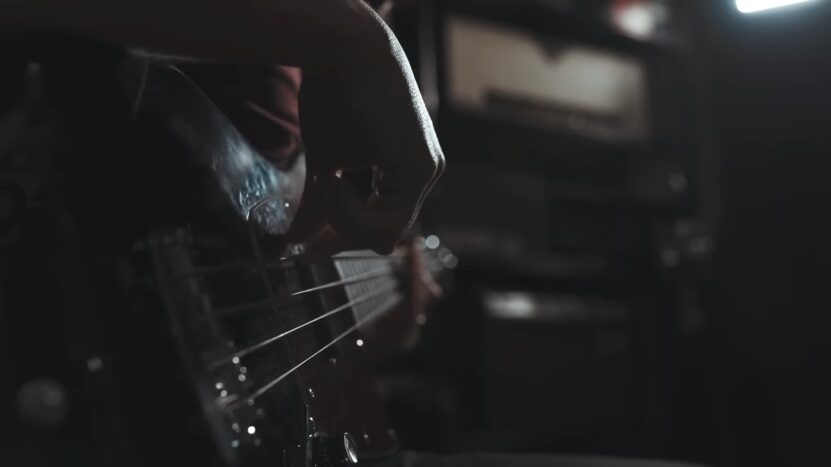Baritone guitars are a unique class of instruments that have gained popularity among musicians for their distinctive sound and versatility.
Unlike standard guitars, baritone guitars are tuned lower, producing deeper, richer tones that are perfect for various music genres.
Proper tuning is essential for maximizing the potential of a baritone guitar, ensuring it delivers the desired sound quality and performance.
What’s It About Baritone Guitars?
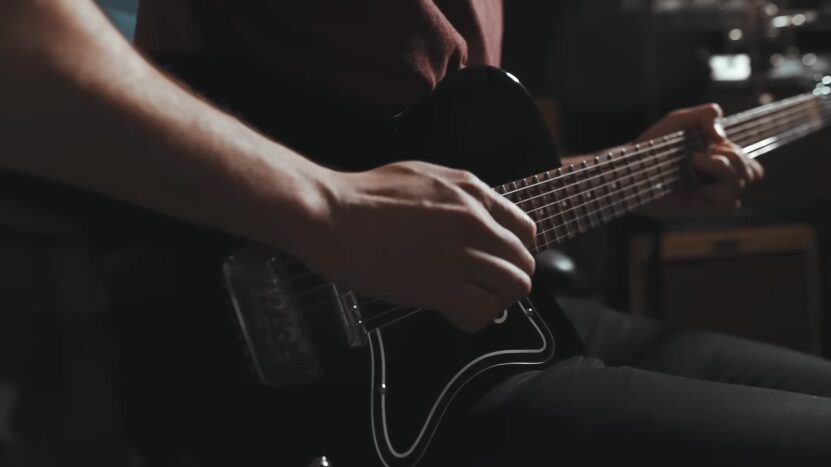
Baritone guitars have a fascinating history that dates back to the mid-20th century. Originally designed to bridge the gap between bass and standard guitars, they became popular in the 1950s and 1960s, thanks to their unique tonal characteristics.
The primary difference between standard and baritone guitars lies in their scale length, with baritone guitars typically featuring a longer scale (27 inches or more) compared to standard guitars (24.75 to 25.5 inches).
This extended scale length allows for lower tuning without sacrificing string tension.
String gauge is another crucial difference. Baritone guitars require heavier strings to maintain proper tension and intonation at lower tunings:
- Standard guitars might use gauges ranging from .010 to .046 inches
- Baritone guitars often use gauges from .012 to .068 inches or even heavier

These differences in scale length and string gauge result in distinct tuning options for baritone guitars, making them ideal for genres like:
- Rock
- Metal
- Jazz
Many renowned artists, including Peter Steele of Type O Negative and Robert Smith of The Cure, have embraced baritone guitars for their unique sound.
Basic Tuning Techniques
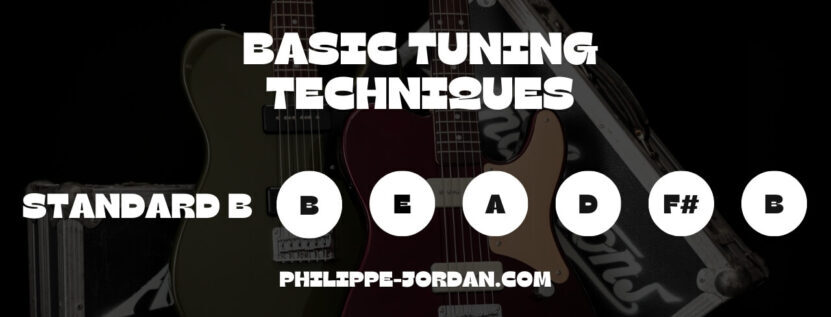
The standard tuning for baritone guitars is B to B (B-E-A-D-F#-B), which is a fourth lower than the standard E to E tuning on a regular guitar. This tuning provides a deep, resonant sound that is characteristic of baritone guitars.
When comparing it to standard guitar tuning, the lower pitch offers a broader sonic range, making it suitable for genres that require heavy, low-end tones.
To achieve accurate tuning, several tools can be utilized. Tuners are essential, with clip-on tuners, pedal tuners, and smartphone apps being popular choices.
Capos can also be useful for quickly changing the pitch without adjusting the tuning pegs.
Various tuning apps and software are available that provide precise tuning capabilities and even allow for custom tuning presets.
Advanced Tuning Methods
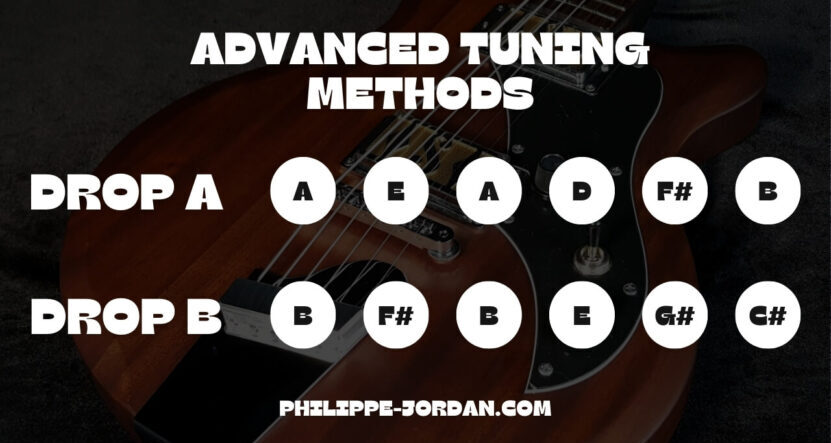
Advanced tuning methods for baritone guitars open up a world of sonic possibilities.
Drop tunings, such as Drop A (A-E-A-D-F#-B) and Drop B (B-F#-B-E-G#-C#), are popular among guitarists looking to achieve even lower pitches and heavier sounds.
These lower the pitch of the lowest string, providing a powerful, resonant tone that is perfect for genres like metal and hard rock.
Custom tunings allow for further experimentation and personalization.
Players can create tunings tailored to specific songs or playing styles, enhancing their creative expression.
It’s important to note that custom tunings may require adjustments to the guitar’s intonation and action.
Ensuring the guitar is properly set up for the chosen tuning will prevent issues such as fret buzz and poor intonation.
String Selection and Maintenance

Choosing the right string gauge for your baritone guitar is crucial for achieving optimal tone and playability.
Heavier gauges provide greater tension, which is necessary for maintaining proper intonation and avoiding a floppy feel at lower tunings.
Commonly, baritone guitars use string sets ranging from .012 to .068 inches, but some players may opt for even heavier gauges depending on their tuning preferences and playing style.
String brands and recommendations vary, but popular choices for baritone guitars include:
These brands offer a range of gauges and materials that cater to different tonal preferences. Regular maintenance is essential to keep your strings in top condition.
Cleaning the strings after each use, changing them regularly, and checking for wear and tear will extend their lifespan and ensure consistent performance.
Setup and Adjustment Tips
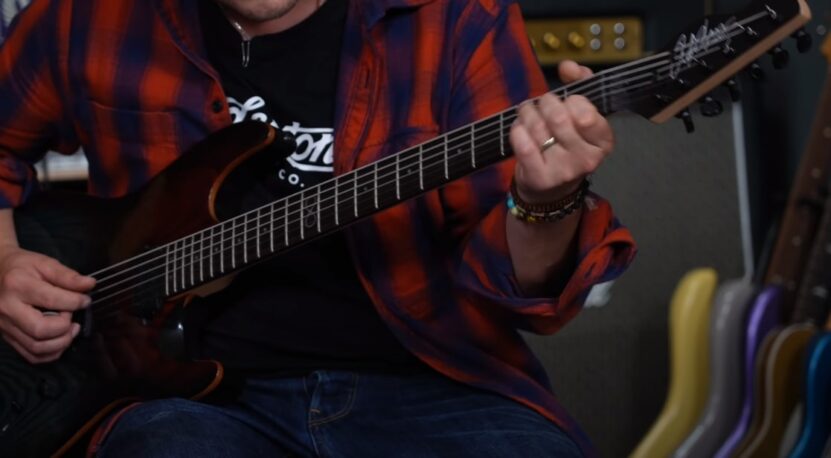
Proper setup and adjustments are vital for maintaining the performance and playability of your baritone guitar.
Adjusting the truss rod ensures the neck has the correct amount of relief, preventing issues like fret buzz.
To do this, use a truss rod wrench to make small adjustments, checking the neck’s curvature frequently.
Setting the bridge and saddle is another crucial step. The bridge height affects string action, and the saddle height impacts intonation.
Both should be adjusted to achieve comfortable playability and accurate pitch across the fretboard.
Pickup adjustments can significantly influence your guitar’s tone. Ensuring the pickups are at the right height and balance can enhance your sound quality.
Maintaining proper tension is essential, especially with the heavier strings used on baritone guitars.
Practical Applications and Playing Styles

Baritone guitars are incredibly versatile and can be incorporated into various music genres.
In rock and metal, their deep, resonant tones add heaviness and power to riffs and solos.
Jazz players appreciate the extended range and rich harmonic possibilities, while funk musicians enjoy the punchy, low-end grooves that baritone guitars can produce.
Techniques for playing baritone guitars often differ from standard guitars.
For instance, power chords and open chords can take on new characteristics due to the lower tuning.
Experimenting with fingerpicking and alternate tunings can further expand your playing style.
Case studies of famous baritone guitar songs, such as “Disintegration” by The Cure and “Black Sabbath” by Black Sabbath, showcase the instrument’s capabilities.

